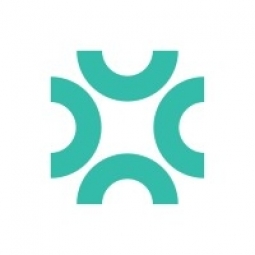公司规模
Mid-size Company
地区
- America
国家
- United States
产品
- Planning Maestro
- Abila
技术栈
- Excel
实施规模
- Enterprise-wide Deployment
影响指标
- Productivity Improvements
- Cost Savings
技术
- 功能应用 - 企业资源规划系统 (ERP)
适用行业
- 医疗保健和医院
适用功能
- 商业运营
服务
- 软件设计与工程服务
关于客户
Equitas Health 是一家成立于 1984 年的区域性非营利性社区医疗保健系统。它是联邦认证的健康中心仿制机构 (FQHC-LAL),也是美国最大的 LGBTQ+ 和 HIV/AIDS 服务医疗保健组织之一。Equitas Health 在 13 个城市设有 21 个办事处,每年通过以患者为中心的综合尖端服务为俄亥俄州、肯塔基州和西弗吉尼亚州的数万名患者提供服务,包括初级和专科医疗保健、药房、牙科、心理健康和康复、HIV/STI 治疗和预防、PrEP/PEP、Ryan White/HIV 病例管理、护理导航、宣传和其他社区健康计划。Equitas Health 药房是健康中心综合护理和业务模式不可或缺的重要组成部分,将 100% 的利润重新投资到组织的计划和服务中。Equitas Health 经营药房,为俄亥俄州和德克萨斯州的患者提供服务。
挑战
Equitas Health 是一家区域性非营利性社区医疗保健系统,其预算和规划流程面临挑战。该组织拥有 21 个办事处和 25 个不同部门的 500 多名员工,使用 Excel 进行预算和规划。预算将在 Excel 中创建,然后上传到其会计系统 Abila 中以运行月度报告。这个过程漫长、复杂且容易出错。组织内的部门主管会创建自己的部门预算初始版本,这进一步加剧了复杂性。然后,这些预算将作为单独的电子表格提交给财务团队,财务团队会将其添加到更大的公司预算中。鉴于部门数量众多且多个人员负责制定各个预算,版本控制和错误很常见,合并过程耗时且繁琐。
解决方案
Equitas Health 最初考虑改变其整个会计系统,因为它在财务规划方面存在局限性。然而,在经过广泛的 RFP 流程后,他们发现 Abila 在拨款会计方面相当先进,可以非常详细地处理所有必要的部分和编码,这对于向非营利组织的资助者汇报至关重要。该系统确实缺乏预测业务中更具战略性的财务组成部分的能力。这促使他们实施了 Centage 的 Planning Maestro。该解决方案与他们的会计软件无缝集成,作为 GL 的扩展运行,并支持持续的实际值与预算比较和准确预测。Equitas Health 现在可以自动运行关键财务报告并将其提供给运营商。该解决方案还允许他们以如此详细的细节编制人员级别的预算,从而使预算更加精确。
运营影响
数量效益

Case Study missing?
Start adding your own!
Register with your work email and create a new case study profile for your business.
相关案例.

Case Study
Hospital Inventory Management
The hospital supply chain team is responsible for ensuring that the right medical supplies are readily available to clinicians when and where needed, and to do so in the most efficient manner possible. However, many of the systems and processes in use at the cancer center for supply chain management were not best suited to support these goals. Barcoding technology, a commonly used method for inventory management of medical supplies, is labor intensive, time consuming, does not provide real-time visibility into inventory levels and can be prone to error. Consequently, the lack of accurate and real-time visibility into inventory levels across multiple supply rooms in multiple hospital facilities creates additional inefficiency in the system causing over-ordering, hoarding, and wasted supplies. Other sources of waste and cost were also identified as candidates for improvement. Existing systems and processes did not provide adequate security for high-cost inventory within the hospital, which was another driver of cost. A lack of visibility into expiration dates for supplies resulted in supplies being wasted due to past expiry dates. Storage of supplies was also a key consideration given the location of the cancer center’s facilities in a dense urban setting, where space is always at a premium. In order to address the challenges outlined above, the hospital sought a solution that would provide real-time inventory information with high levels of accuracy, reduce the level of manual effort required and enable data driven decision making to ensure that the right supplies were readily available to clinicians in the right location at the right time.

Case Study
Gas Pipeline Monitoring System for Hospitals
This system integrator focuses on providing centralized gas pipeline monitoring systems for hospitals. The service they provide makes it possible for hospitals to reduce both maintenance and labor costs. Since hospitals may not have an existing network suitable for this type of system, GPRS communication provides an easy and ready-to-use solution for remote, distributed monitoring systems System Requirements - GPRS communication - Seamless connection with SCADA software - Simple, front-end control capability - Expandable I/O channels - Combine AI, DI, and DO channels

Case Study
Driving Digital Transformations for Vitro Diagnostic Medical Devices
Diagnostic devices play a vital role in helping to improve healthcare delivery. In fact, an estimated 60 percent of the world’s medical decisions are made with support from in vitrodiagnostics (IVD) solutions, such as those provided by Roche Diagnostics, an industry leader. As the demand for medical diagnostic services grows rapidly in hospitals and clinics across China, so does the market for IVD solutions. In addition, the typically high cost of these diagnostic devices means that comprehensive post-sales services are needed. Wanteed to improve three portions of thr IVD:1. Remotely monitor and manage IVD devices as fixed assets.2. Optimizing device availability with predictive maintenance.3. Recommending the best IVD solution for a customer’s needs.

Case Study
HaemoCloud Global Blood Management System
1) Deliver a connected digital product system to protect and increase the differentiated value of Haemonetics blood and plasma solutions. 2) Improve patient outcomes by increasing the efficiency of blood supply flows. 3) Navigate and satisfy a complex web of global regulatory compliance requirements. 4) Reduce costly and labor-intensive maintenance procedures.

Case Study
Cloud-based healthcare solution for Royal Philips
Royal Philips wanted to launch its cloud-based healthcare solution HealthSuite Digital Platform in China to deliver services to help cope with challenges related to urbanization and population growth. Philips wanted to achieve this goal by combining mobile, cloud computing and big data technologies. To bring this platform and product to market, Philips required cloud computing and local technical service capabilities in China, in addition to a flexible IT infrastructure that could handle user requests.








